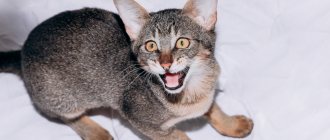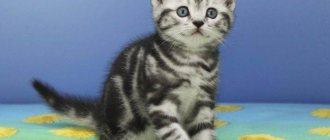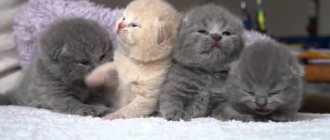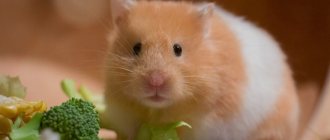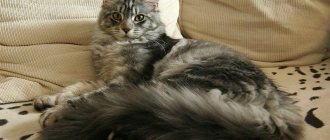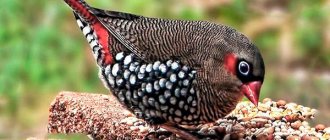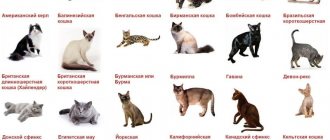The British have an instinct for cleanliness at the genetic level. But in order to achieve lasting and positive results in the behavior of these pets, it is very important to raise them correctly. In this article we will tell you what is needed to keep a British cat in an apartment, how to train him to use a litter box, and also how to wash and comb British cats. By following the basic rules of caring for the mustachioed inhabitant of the house, you will raise a truly luxurious animal with the manners of an aristocrat. What is the difference between a British cat and a Scottish cat >> British Fold - reality or myth >>
What to prepare for the kitten's arrival
If the choice of the future pet has already been made, all that remains is to wait until it grows a little and can leave the nursery. It is necessary to prepare and foresee a lot for his arrival.
First of all, buy:
- carrying;
- a house or bed for sleeping;
- scratching post;
- bowls and food containers;
- dry and wet food;
- litter tray;
- filler;
- toys;
- accessories and grooming products.
Carrying
Carrying is necessary for safe transportation. They will not allow you to pick up an animal from a professional nursery in her absence. Moreover, this item will come in handy more than once in the future - when traveling to the veterinarian, to the country, or on vacation to another city or country.
Pet stores now offer a large selection of carriers of different sizes and from a variety of materials - rag, in the form of bags made of leatherette and plastic.
The latter option is preferable, as it has a large internal volume, rigid and durable walls, and retains its shape. If in the future it is possible to fly with your pet on an airplane, then you need to choose exactly this model, since airlines have special requirements for the luggage container.
It’s better to immediately choose a fairly expensive carrier, with a metal door and strong fastenings. You should not buy a small one, the baby will grow within a year, and adult British cats can reach a weight of six kilograms. Estimated price - 2-3 thousand rubles.
At first, with the door removed, the plastic carrier can also serve as a place to sleep.
Cat house and scratching post
In specialized stores, you can choose an option that will suit everyone - it will suit your pet in size and fit well into the interior of the house. There are many options for cat houses.
The most convenient one for a Briton is a small one on a round stand, which also serves as a scratching post. This breed is not very active and large play structures will not attract the kitten's attention.
The preferred upholstery option for the house is carpet; it washes best and lasts longer. The rope on the scratching post should preferably be jute. Although at first there will be a little garbage from it, any cats give it preference over other options and willingly sharpen their claws.
This design can be purchased for 4 thousand rubles.
You can get by with a bed, but this is a less convenient option. It wears out faster and requires frequent washing. The minimum cost is 1000 rubles. And in this case you will have to buy a scratching post separately. A small corner corner made of carpet will also not cost less than a thousand. But it quickly breaks down, and kittens are not too fond of such material.
Bowls and food containers
Among the huge variety of cat dishes, you should choose one that is comfortable for your pet and made from safe materials. This is stainless metal and earthenware.
A double bowl on an adjustable stand for water and dry food is very practical. You can buy a separate earthenware plate for wet and natural food. All three will cost 1-1.5 thousand rubles if chosen correctly.
The height-adjustable stand is very convenient - for a kitten you can lower the bowls to the lowest level, for an adult cat you can raise them. This accessory is pet-friendly and stable - it won't slide on the floor when the animal is eating.
A small container for food is also desirable; you can pour dry mixture (0.5-1 kg) into it and always keep it in the kitchen. It is usually made of metal and beautifully designed. This accessory is inexpensive - from 200 rubles.
Stern
First of all, you need to ask the breeder what kind of diet the British baby had in the nursery. For the first time, it is necessary to purchase exactly the food that the kitten is accustomed to.
If the desire arises, you can gradually transfer it to another, but not in the first days after the move.
Several bags of high-quality wet food are also necessary, even if you do not feed them to the animal in the future. In the first days at home, the baby will experience stress and may refuse to eat. This delicacy usually creates an appetite.
The cost of super premium food starts from about 500 rubles per 1 kg.
Toilet and litter
The acquisition of these important items must be taken seriously. First of all, find out from the breeder what kind of toilet and litter the British kitten uses in the nursery.
Experienced breeders never set up a separate small tray for babies; kittens, looking at their mother, begin to go to the same toilet as her.
Usually in nurseries they use closed toilets of the “house” type. They often consist of two compartments, one of which contains a grid for cleaning the paws. Such a toilet is not cheap and can cost about 5 thousand rubles, but it is made of high-quality plastic that is easy to clean, will never break and has bactericidal properties (with silver ion deposition).
They are usually equipped with special filters for air purification.
For small kittens, wood filler is preferable; most likely, this is what the baby is used to in the nursery. This is the most inexpensive and safest option. A 15 liter bag costs about 500 rubles.
Don't forget about a special scoop for cleaning the toilet.
Toys
Simply necessary in the house - balls, swings, mice made of natural fur, interactive ones. It is important that they are made of safe materials and do not have small parts that come loose. 1000 rubles are enough to purchase them. The missing ones can be easily made with your own hands from old clothes or a cardboard box.
Accessories and grooming products
A whole list of items is needed here:
- metal combs of two types - with a frequent and rare comb;
- massage brush for combing;
- nail clipper;
- lotions for the care of ears and eyes;
- shampoo for kittens;
- first aid kit;
- sprays for toilet training (you may need them at first).
These acquisitions will cost 2000-3000 rubles.
Ready-made feed
Many owners prefer to give their Britons dry food and wet canned food - it’s convenient and simple. But the products must be of high quality - not lower than premium.
It is better to avoid buying cheap food from the nearest supermarket. Economy class food contains practically no natural meat. But they contain ballast substances, dyes, flavors and other harmful components.
You should carefully study the composition of the feed. Meat should come first. Good products contain vitamins, minerals and amino acids that support the health and strengthen the immune system of the British cat. A minimum of carbohydrates is encouraged - they lead to weight gain.
Selection of industrial feed
Owners of British cats consider the following brands to be the best food:
- Earthborn Holistic;
- Go! Natural Holistic;
- Bosch Sanabelle Grande;
- Acana;
- Orijen;
- Eukanuba;
- Eagle Pac Cat Holistic;
- 1st Choice.
This is a super premium class and holistic food. They are quite expensive, but their composition fully satisfies the needs of the cat's body.
If your budget is limited, you can purchase premium food for the British:
- Purina Pro Plan;
- Brit Premium;
- RoyalCanin;
- Hill's.
The Royal Canin company produces a special food for British kittens that can be fed to babies aged 4 to 12 months - British Shorthair Kitten. It is highly digestible and contains prebiotics that support the functioning of the gastrointestinal tract.
Royal Canin produces British Shorthair Adult food for adult cats. It helps Britons maintain muscle mass. Omega-3 fatty acids strengthen joints and maintain their mobility.
For kittens, pregnant, lactating, spayed, neutered, elderly cats or pets with any diseases, buy food from specialized lines. All well-known manufacturers have such names.
Before choosing food for your British cat, it is better to consult a veterinarian. He will give individual nutritional recommendations.
How to keep your kitten safe
British babies are just as restless and inquisitive as kittens of more active breeds, such as the Bengal or Abyssinian. As soon as they get comfortable in their new home, they will definitely crawl into every corner and explore all the cabinets and tables.
It is the responsibility of the owner and all household members to ensure the safety of pets. Little Britons need care and attention just like ordinary children.
To protect the British from danger and prevent irreparable consequences, the following measures must be taken:
- Do not let the kitten alone in the toilet room, especially when the water is filling the bath. The toilet lid must always be closed. Although a cat can swim, a kitten can easily drown; he simply cannot get out of the water.
- All medications and household chemicals must be placed in closed cabinets. One of the most frequent calls to veterinary clinics today is poisoning of kittens under one year of age.
- All windows that are usually opened for ventilation should have special screens. If a small British kitten falls even from the second floor, he could die or be seriously injured. By the time the baby grows up, anti-cat nets should be on all windows in the apartment, if it is a multi-story building.
- While the baby is small, you should not leave him alone for a long time, unattended. If he climbs onto a tall cabinet, he may also break. It is also better to hide small objects and toys. It is better, when leaving, to lock it in a room where there are no dangerous objects.
- In a private house, you must ensure that the doors to the garage, boiler room, and utility rooms are always closed. Poisoning, for example, with antifreeze, often costs a child’s life.
- The garbage container in the kitchen should be closed or kept out of reach of the pet. The kitten can be poisoned by the remains of low-quality or unsuitable food or be injured by sharp objects, such as metal cans.
- Rodent traps and cockroach baits are strictly prohibited in the premises where a British kitten lives.
Ideal age to move
Many future owners want to monitor the growth and development of a British baby from an early period, at least from four weeks. But it is absolutely forbidden to take such a pet away from its mother.
The ideal age to move is three and sometimes four months.
By 12 weeks, a British kitten is more or less ready for independent living. It is at this age that the baby stops sucking mother’s milk, learns to eat solid food, and his own immunity begins to develop.
It is the mother who must do the weaning. If this procedure is carried out forcibly, then, in addition to health problems, behavioral disorders will certainly arise. Early weaning is also fraught with the development of diseases of the respiratory system, diarrhea and, as a result, dehydration.
Both vaccinations against panleukopenia, calcivirus and rhinotracheitis have already been carried out, which means the baby has immunity to these diseases.
The kitten is physically strong enough to move. At two or three months he received from his mother the skills of using a litter tray.
When parting with its mother early, the emotional state of a British kitten suffers greatly, since it is she who teaches how to communicate with people and other animals. A three- to four-month-old baby perceives new faces not with fear, but with curiosity. Therefore, it is worth listening to the opinion of the breeder and picking up a British kitten from the nursery at 12, and sometimes at 16 weeks.
Vaccination (vaccinations) of the British
Vaccination is necessary for absolutely all cats, including those not walking outside. A person can bring the pathogen on shoes or clothes. The first vaccination is given at 8-9 weeks, preceded by anthelmintic treatment. The next vaccine will be given in a month.
It will protect your pet from:
- Cat distemper (Panleukopenia);
- Calcevirosis;
- Chlamydia;
- Rhinotracheitis.
Rabies is vaccinated separately. You need to get an animal passport, where vaccine tags will be pasted, confirmed by the clinic’s stamp indicating the date. Having such a document allows you to transport an animal across the country and abroad, and helps you remember about the next vaccination dates. An adult animal is vaccinated annually.
Moving and adaptation of a British kitten
The first days in a new home are the biggest stress for a baby. Correct behavior by the owner will help the kitten quickly get used to it and survive this difficult period, which takes from three days to two weeks.
It is better to organize your pet's move on the eve of the weekend or vacation in order to give him maximum attention.
First of all, for quick adaptation it is necessary to limit the space. This means that without a person, the kitten should only be in a small room.
It is advisable that there are no unnecessary objects or secluded places where you can hide. The carrier in which he arrived, the house or bedding, the toilet and bowls of food and water should be close to each other. Once the pet gets comfortable, the tray can be moved to its designated place and the doors to other rooms can be opened.
If you immediately let the kitten walk around all the rooms, it may get confused, not find the toilet, and hide in a dark corner out of fear.
Surrounded by objects that he immediately recognizes as his property, the baby quickly recognizes himself in a new home.
You should not force your little Briton into your arms. Even if he begins to purr, but his body is tense, this is a manifestation of fear, not pleasure. Soon he will get comfortable and ask for affection himself.
But the baby must eat regularly. If he is on a natural diet, then 4-6 times a day. With a diet consisting of dry high-quality food, 3-4 feedings are sufficient. Constant access to clean water is required.
It is important to talk kindly to the kitten, not to raise your voice or get angry with him, even if he broke something or went to the toilet in the wrong place. The baby is very sensitive to any emotions.
If there is another animal in the house, then you need to introduce the pets very carefully. It is better to wipe a piece of suede first on the old-timer and then on the baby, then the latter will be safe - the adult cat will not touch him.
Proper education of a British kitten
Raising a British child cannot be put off until later. It must be started immediately, from the first minutes in the house, acted kindly and persistently. In no case should shouting or physical punishment be used against an animal.
Subordination and respect for the owner
First of all, the pet must understand that the most important leader in the house is the owner and he must obey him unquestioningly. Usually, if a person does not scream, but strictly and firmly reprimands for a mistake, and affectionately rewards with a treat or toy for correct actions (for example, using a scratching post), then the baby quickly recognizes the owner’s leadership.
It is important to become an indisputable authority for the British from the first days, then there will be no problems in the future mutual existence.
Toilet tray
Usually the toilet issue is the biggest concern of the future owner. But, if you follow all the breeder’s recommendations, then no problems will arise.
Choosing the right tray, limiting the pet's movement around the house in the first two days and the owner's persistence will help solve this problem.
If the baby does not go to the toilet for a long time, then you should drop him off there 10-15 minutes after eating.
Filler taken from the mother's tray helps a lot. A familiar smell will quickly evoke the necessary associations. In the future, it is advisable to leave a little used filler and mix it with clean filler.
If the little Brit gets lost in the first days and forgets where his toilet is, then you can place several trays around the house.
If embarrassment does occur, do not scold the baby. This is not a whim or harmfulness, but the result of stress and fear. The mark must be washed immediately with special products. The disinfectant composition for veterinary use Verocid has proven itself well - it removes any odors. Sometimes toilet training sprays and products like Antigadin help.
At first, you shouldn’t let your kitten uncontrollably onto beds or sofas. If it marks your upholstered furniture, it will be much more difficult to remove the smell. When the period of stress passes, the toilet problem will disappear on its own.
scratching post
A three to four month old British kitten adopted from a nursery will most likely know how to use a scratching post. Even if the excitement of moving made him forget his old skills, they will quickly be restored if the owner behaves correctly.
If space is limited in the first days, the scratching post should be placed next to the house. If there is nothing else suitable for sharpening his claws, the baby will quickly recall his mother’s lessons in his memory.
Features of caring for the appearance and health of a British kitten
Caring for the little Briton's coat is very important. The baby's fur seems plush due to the thick and voluminous undercoat. Under no circumstances should it be pulled out. Therefore, a massage brush cannot have metal teeth; it is permissible to use only a rubber one.
Up to six months you can do without triple combing, use only a rubber brush; it will remove excess outer hair from the baby, and the undercoat will not be harmed. It is advisable to carry out the procedure once a week. The pet really likes this accessory - the massage has a beneficial effect on the skin and soothes it. In addition, in this case the wool is not electrified.
An adult British cat, especially during the molting period, is combed first with a sparse comb, then with a frequent comb and a brush. A slicker will only be needed if tangles form. Finally, be sure to remove any remaining hair with wet hands, otherwise it will end up in the kitten’s stomach.
Your pet's nails should be trimmed as they grow, but at least once a month. On the hind legs they often wear out, especially if the floor is made of porcelain stoneware or marble chips. On the front ones, the very tip of the claw is cut off with a nail clipper - no more than one millimeter and always at a right angle.
There is no need to bathe your Briton. A healthy animal takes care of the cleanliness of its fur.
If there is an urgent need for washing (after a walk, diarrhea, severe pollution), then you can only use special shampoos.
The cleanliness of your baby's eyes and ears should be checked daily, as this breed has a tendency to watery eyes and accumulate dark discharge in the corners of the eyes. If they become dirty, clean them carefully using special solutions and drops.
The British are mostly healthy animals. The biggest problem is obesity. Kittens are playful and restless, but adult cats become imposing, leisurely, usually move little and sleep a lot. It is important to choose the right diet from a young age and avoid overeating.
Hypertrophic cardiomyopathy is a rarely inherited genetic disease and is observed in adult males. At risk are kittens that are slowly gaining weight. In this case, it is recommended to periodically visit the veterinarian and have an ultrasound examination of the heart. Urolithiasis is also quite common, especially after castration.
Description of the breed
The British Fold cat's description is not like other cats. This breed definitely cannot be confused with anyone else. Outwardly, they are somewhat similar to teddy bears. Fold cats are truly unique. Ears curved towards the head are their main feature. They are characterized by a round head with chubby cheeks and a short nose. The eyes are wide open and large. The paws are short and rounded.
The fur is soft and short, like that of a plush toy. This cat breed is medium in size with a strong body. The average weight of a British adult is about 8 kg. It is generally accepted that fold-eared cats have a traditional color of blue or gray, but few people know that the original representatives of this breed had white hair.
The unusual appearance of lop-eared animals is caused by a gene mutation. Another consequence of this mutation is less pleasant: often crossing two folds leads to the birth of kittens with sore joints. That is why it is recommended to cross representatives of this breed with other breeds (with straight ears).
Sexual development of the British kitten
The period of sexual development begins at six months for the British. But, if cats mature and grow for a long time, usually up to two years, then the situation with females is different.
At seven to nine months the first estrus may begin, and by ten to twelve months the cat is ready to bear and give birth to offspring.
The duration of estrus is from seven to ten days. If fertilization does not occur, then after two to three weeks it will begin again. The female becomes irritable, excited, sometimes even aggressive, screams loudly, some individuals mark their territory like cats.
If the British female is not intended for breeding, then after one or two heats it is necessary to sterilize. You can limit yourself to taking sedatives, but if they are plant-based, they are usually ineffective.
Hormonal drugs reduce sexual activity, but they can destroy a cat’s genitourinary health within six months of regular use.
“Empty” heats not only cause anxiety for the whole family, but also cause the development of endometriosis and pyometra in the female.
About mating
But now your plush pet grows up and, if you have not previously decided to sterilize it, you need to figure out how to knit it correctly:
- Despite the fact that puberty in the British begins at 8-10 months, professional breeders breed them no earlier than one and a half years. Before this period, the animal’s body is still at the stage of formation. Early mating and pregnancy can lead to difficult births and weak offspring.
- It is best to address the issue of matchmaking on the second or third days of estrus. According to breeders, these days are the most desirable for conception.
- As a rule, the cat is taken to the groom's territory. At the same time, you cannot rush - the animal must be given the opportunity to get used to it a little.
- The bride must also get used to her boyfriend. There is no need to rush the mating if the lady is wary of an unfamiliar cat.
- It is advisable to choose an adult and experienced gentleman. Especially if the lady is young. Another important feature of British women is their inaccessibility - this should definitely be taken into account when choosing a groom.
- It is preferable to leave the pet alone with the cat for several days - this decision will significantly increase the likelihood of offspring.
Annual calendar for caring for a British kitten
For the convenience of owners, all mandatory procedures for caring for the appearance and health of a British kitten are summarized in a table.
| Periodicity | Type of procedure |
| Daily | Combing during shedding season |
| Preventative examination of external condition | |
| Weekly | Cleaning ears and eyes |
| Regular brushing | |
| Monthly | Nail trimming |
| Quarterly | Deworming |
| Grooming (if desired) | |
| 2 times per year | Preventive examination by a veterinarian, urine test for urolithiasis |
| 1 time per year | Preventive vaccination against panleukopenia, rhinotracheitis, calcivirus and rabies |
| Vaccination against lichen |
1111
Brushes
For British kittens, it is worth purchasing a rubber brush, preferably oval-shaped, which will be equipped with small teeth made of soft material. It will allow you to carry out care painlessly: it will remove “static” - electricity that accumulates on the fur, and it is easy to massage the skin without injury. Since Britons have short fur, there is no need to groom it in any special way. If the kitten sheds, wet your hand in warm water and massage the animal’s fur and skin . Caring for British Fold kittens in terms of fur is absolutely not difficult.
© shutterstock

